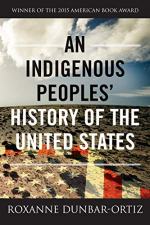
|
| Name: _________________________ | Period: ___________________ |
This test consists of 15 multiple choice questions and 5 short answer questions.
Multiple Choice Questions
1. Which permanent settlement eventually developed into the commonwealth of Virginia?
(a) Salem.
(b) Chelsea.
(c) Plymouth.
(d) Jamestown.
2. What was the U.S. population in 1860?
(a) About 32 million.
(b) About 28 million.
(c) About 26 million.
(d) About 22 million.
3. What was the name for the forced march of 8,000 Navajos to a military concentration camp in New Mexico?
(a) The Death March.
(b) The Bloody Trek.
(c) The Long Walk.
(d) The Cruel Journey.
4. Which U.S. president ordered the Pike expedition?
(a) James Monroe.
(b) William Henry Harrison.
(c) Andrew Jackson.
(d) Thomas Jefferson.
5. In 1805, the Choctaws ceded most of their land to the U.S. government. How much did they receive in compensation?
(a) $50,000.
(b) $60,000.
(c) $30,000.
(d) $40,000.
6. What was the name of the Lakota Sioux's sacred land, where Mount Rushmore is now located?
(a) The Blue Lake.
(b) The Green Mountains.
(c) The Black Hills.
(d) The Great Plains.
7. According to the Dunbar-Ortiz, what event kickstarted the U.S. government's attempts to annex former Spanish territories in the Americas?
(a) The Pike Expeditions.
(b) The Gold Rush.
(c) The Lewis and Clark Expedition.
(d) The Louisiana Purchase.
8. What was the name of the settler-ranger who became president of the independent country of Franklin?
(a) John Sevier.
(b) Daniel Boone.
(c) William H. Seward.
(d) William Sherman.
9. What state was Jackson senator of?
(a) Louisiana.
(b) Kentucky.
(c) Georgia.
(d) Tennessee.
10. What was the name of the Native leader known as "the Prophet"?
(a) Little Crow.
(b) Tecumseh.
(c) Little Wolf.
(d) Tenskawatawa.
11. Which fur trapper and entrepreneur played a role in the U.S. invasion of northern Mexico?
(a) John Sevier.
(b) Simon Bolivar.
(c) Daniel Boone.
(d) Christopher Houston "Kit" Carson.
12. Which presidential administration was responsible for the Louisiana purchase?
(a) The Jefferson administration.
(b) The Johnson administration.
(c) The Buchanan administration.
(d) The Jackson administration.
13. Which ideology stated that the U.S. had a God-given right to spread across the continent, from the Atlantic to the Pacific ocean?
(a) Neocolonialism.
(b) Capitalism.
(c) American indvidualism.
(d) Manifest Destiny.
14. What year was President Lincoln inaugurated?
(a) 1865.
(b) 1861.
(c) 1859.
(d) 1863.
15. Which historian described U.S. history as constantly alternating between a "peace" policy and a "war" policy?
(a) John Grenier.
(b) Mathew King.
(c) Robert D. Kaplan.
(d) Roger Buffalohead.
Short Answer Questions
1. How many future states developed in the territory acquired in the Louisiana Purchase?
2. What was the name of the Sauk leader in 1832?
3. What was the Spanish name for interrelated city-states in the Southwest?
4. Which nationality did Admiral George Dewey refer to as "Indians"?
5. Which of the following Native nations was a member of the Five Civilized Tribes?
|
This section contains 395 words (approx. 2 pages at 300 words per page) |

|




